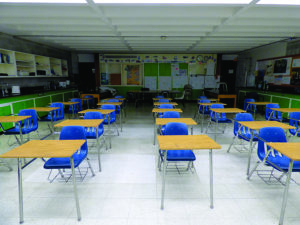EASTHAM — The four towns of the Nauset Regional School District may not have to vote on the high school building project until next spring.
Last week, the regional school committee asked the Mass. School Building Authority (MSBA) to move its deadline for approval of the project, already extended to Nov. 1, to May 31, 2021. For the $132 million effort to advance, town meetings in Brewster, Eastham, Orleans, and Wellfleet must agree, and voters in those communities must approve debt exclusions for borrowing at a subsequent election.
Those actions had been planned for April (for Wellfleet) and May (for the other towns) of this year, but the pandemic disrupted that scheme. Only Orleans is holding a town meeting this spring, with Eastham scheduled to meet Sept. 21 and Wellfleet Oct. 5. Brewster has yet to schedule its annual town meeting.
The state requires that the town meeting votes and ballot decisions all take place within a limited period. With the current situation, “there was no way to request money for the project and fall into that timeline,” Nauset Regional High School Building Committee Chair Greg Levasseur told the regional school committee on June 11.

Pending towns’ approval, the MSBA will cover about $37 million of the project’s costs, with the remainder borne by the member towns based on enrollment, over the borrowing period. The Authority is expected to vote on the extension request on June 25.
Levasseur said he conferred with Eastham Town Administrator Jacqui Beebe and Wellfleet’s former moderator and town administrator, attorney Harry Terkanian, about the crazy quilt of town meeting and election dates. Both are members of the building committee.
“A half hour into the conversation, we realized there were so many ifs and buts,” he said. At the time, Wellfleet was between administrators (Maria Broadbent was tapped by the select board last week). “It was way too complicated,” Levasseur said, to count on taking the votes in the fall. What the committee has requested now, he said, “is open-ended enough to give everyone time to step back and get before the voters.”
The building committee “has been using the down time to work on refining the messaging and information for the public when we restart public outreach, in written and video form,” said Levasseur. “The architect is still working on a second 3-D model.”
While the delay has its frustrations, there appear to be benefits as well. “Borrowing costs are way down,” Levasseur said. “A couple of projects have gone out to bid recently at 1.7 to 2.2 percent. There are multiple bidders at those low rates.” That contrasts with the 3.25-percent interest rate anticipated earlier for the Nauset project.
“We just have to wait and get voters’ attention again, have a long discussion about the project, and move on,” said Levasseur.
Moving on is much in the minds of the system’s administrators as the last day of school, June 19, approaches. But moving on to what?
“If I had a dollar for every time someone asked me what the plan is for next school year, I’d be a rich man,” Supt. Tom Conrad told the regional school committee on June 11. Conrad said he is waiting for guidance from the state commissioner of education. “By the middle of next week, we anticipate having an understanding what that directive will be, and what he believes are the options we can consider,” Conrad said.
Earlier, high school Principal Chris Ellsasser addressed the question. “We are committed to being ready for whatever comes our way — whether full face-to-face instruction, blended, or 100 percent out of the building — to have course and schedule designs that can change that up with a week’s notice,” he said. Ellsasser went on to say that the faculty is looking at adopting a learning management system to allow all teachers to design classes with online and face-to-face components. “Then you’re ready to teach no matter what the conditions,” he said.
“It was a good year despite some of the bumps,” middle school Principal Julie Kobold said. “There was definitely a lot of learning.” As the school monitored its students, “we found more and more kids struggling. We found that there were significant emotional issues within families that we were surprised by,” she said.
Kobold described how problems got more difficult over time. “You might send an email saying a student is two weeks behind, how can we help,” she said. Following that, she said, “parents might then share more personal details. More students and even their families began to drop out at the end, especially last week. Families were e-mailing saying, ‘We’re done.’ ”
“This summer will be unlike any we’ve ever had,” Conrad said. “The administration is prepared to work through the summer to get everything ready. We are strongly considering at the elementary level and possibly the middle school some type of summer program in August, beginning to look at how to help students with gaps in learning.”
Nauset has always had a summer program for students receiving special education services, and that will continue. The new four-week summer program under discussion, Conrad said, would address concerns about students who maybe were “not as active in their learning as we would have liked.”



